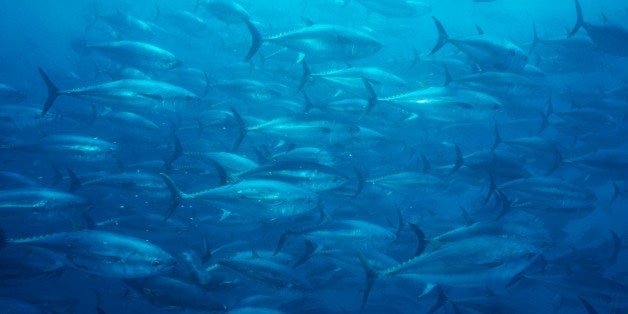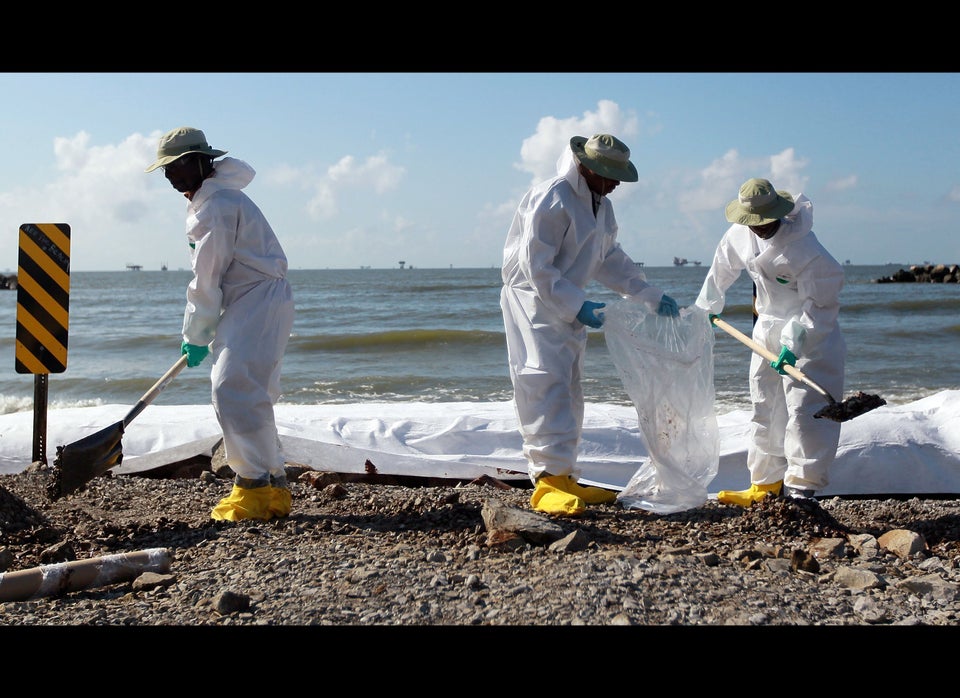
Oil spilled during the 2010 Deepwater Horizon disaster caused severe defects in the developing hearts of tuna exposed to the substance in a laboratory, according to a study by government and academic scientists that hints at long-term damage from the accident.
The research, published this week in Proceedings of the National Academy of Sciences, shows that the crude that gushed out of BP's failed Macondo well for nearly three months could have compromised tuna embryos and larvae, killing off some of the fish and shortening the lives of others.
The research comes 25 years after crude from the tanker Exxon Valdez devastated Alaska's Prince William Sound, and as another, albeit much smaller, spill threatens Galveston Bay aquatic life in ways that may not appear for years.
"Oil's damage doesn't disappear overnight, nor does it cease after the oil sheen goes away," said Jacqueline Savitz, a vice president at the conservation group Oceana.
The study -- along with research published in the Feb. 14 issue of the journal Science -- shows that polyaromatic hydrocarbons in crude harm heart development in bluefin tuna, amberjack and yellowfin tuna by slowing the heart beat and disrupting its rhythm.
"Crude oil shuts down key cellular processes in fish heart valves," said Barbara Block, a professor of marine science at Stanford University and a co-author of the paper. "We can now say with certainty that oil causes cardiotoxic injuries in tuna, and we know the mechanism of exactly how this occurs."
Tuna are large predatory fish that spawn in the northern Gulf of Mexico during the spring and summer -- just when BP's well was sending oil into the water four years ago. Because the fish embryos stay near the surface, they were especially susceptible to floating crude.
The study published this week does not document long-term damage to adult tuna, long-lived species that cannot be fished commercially until they are 8 years old.
Swimming ability
But John Incardona, a research toxicologist with the National Oceanic and Atmospheric Administration, and the lead author of the paper, said the heart defects materializing in the young tuna could inhibit their swimming ability later on.
Even when exposed to lower concentrations of oil, "fish that looked morphologically normal on the outside still had abnormal heart rhythms," Incardona said. Those fish might survive but might die prematurely.
Researchers from the National Oceanic and Atmospheric Administration, Stanford and other universities, said the damage they documented to the young tuna in a Queensland, Australia, laboratory is consistent with defects observed in Prince William Sound herring exposed to crude when the Exxon Valdez tanker ruptured in 1989.
The new study, which used crude collected from the Gulf of Mexico, was designed to emulate environmental conditions at the time of the disaster. Researchers exposed the transparent embryos to crude and used digital microscopes to capture video, revealing the heart rates and rhythms in the fish, the size of the heart chambers, the thickness of the muscle walls and other characteristics.
BP has questions
BP questioned the methodology, saying that oil concentrations used in the lab experiments exceeded those in the Gulf during the 2010 spill.
"The paper provides no evidence to suggest a population-level impact on tuna, amberjack or other pelagic fish species in the Gulf of Mexico," said Jason Ryan, a spokesman for the company. "The authors themselves note that it is nearly impossible to determine the early life impact to these species. To overcome this challenge, it would take more information than what's presented in this paper." ___
(c)2014 the Houston Chronicle
Visit the Houston Chronicle at www.chron.com
Distributed by MCT Information Services
